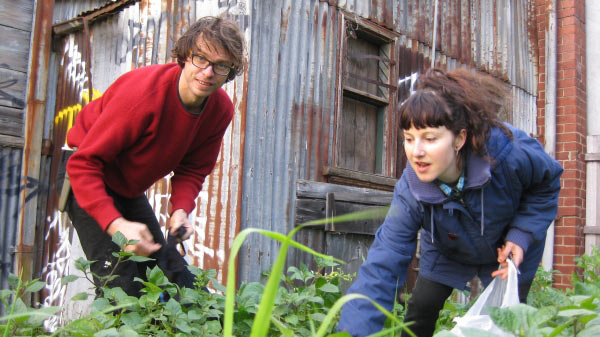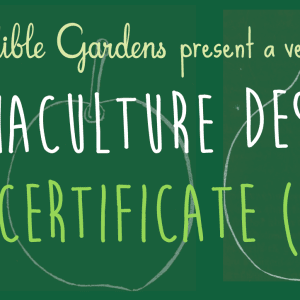Dan Palmer (see Part One here)
Oak trees are a brilliant example of a perennial staple crop. They produce acorns, and acorns are a serious contender for supplying bulk calories to humans in a sustainable way (whether directly or via animals). Indeed, for thousands of years in our past that is exactly what they did. Balanoculture is a special word referring to any culture that eats acorns as a staple food.
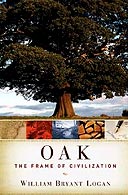
In his fabulous Oak: The Frame of Civilisation, William Bryant Logan not only reports in detail on how ubiquitous acorn-eating cutures were, but notes that “evidently, balanocultures were among the most stable and affluent cultures the human world has ever known” (p. 55).
He further reports on David Bainbridge’s (the person who coined the term balanoculture) conclusion that “local oak uplands could routinely support villages of one thousand people, and these people could harvest enough acorns in three weeks to last two or three years” (p. 55). Not to mention another researcher who concluded in one case that “it took ten times less labour to harvest acorns than it did to harvest wheat and barley” (p. 55).
Wow! Now that sounds like a bit of all right! Naturally in reading this stuff, and thinking thoughts about it all, I got fired up to eat some acorns.
Luckily for me I live in Castlemaine, a small town about 1.5 hours by car or train from Melbourne with a wonderful botanical gardens. The Castlemaine Botanical Gardens aree dripping in oak trees, and once every year or two the oak trees are dripping in acorns.
So about eight months ago my family and I collected some, about a barrow load in total. We started by crushing them and feeding them to the chooks. But more recently we have started feeding them to ourselves. Here’s how we went about it.
Step One: Shell ‘em
We dropped them into a large mortar and knocked them around with the pestle a bit to loosen up the shells. We then pulled the shells off by hand, enlisting visiting friends to help. In the next few years we will be looking at a mechanical shelling solution as this stage takes ages.
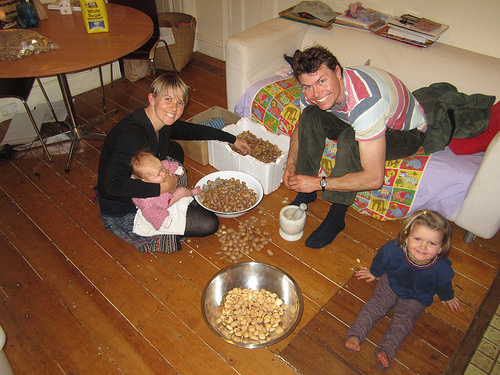
Manda, Nikka, Will & Ciela shelling ’em
Step Two: Grind ‘em into grits
We then popped the clean acorn meats into a blender with some water and blended them up into little bits and pieces. About the size of the wheat grains as they would later replace as input for our grain mill.
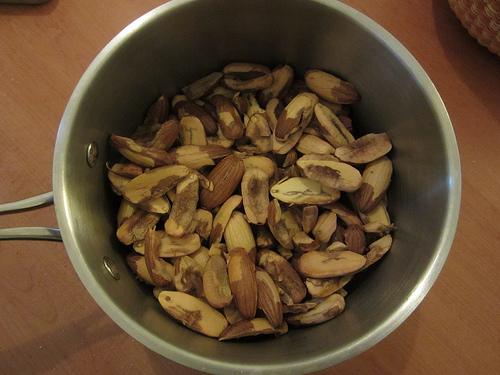
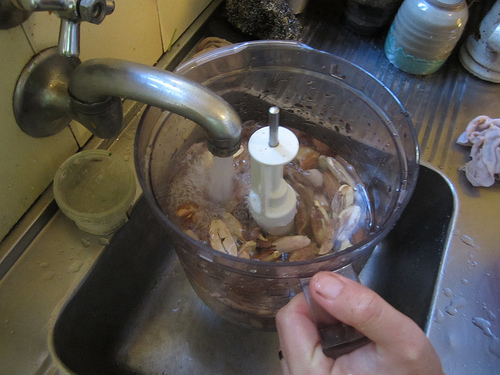
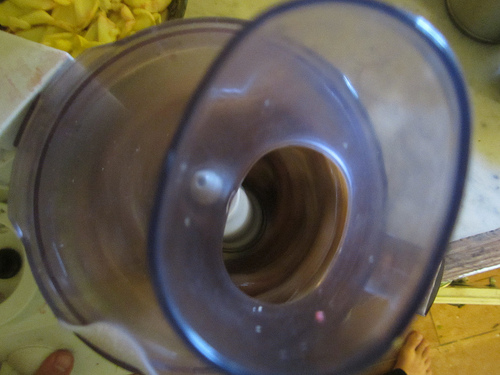
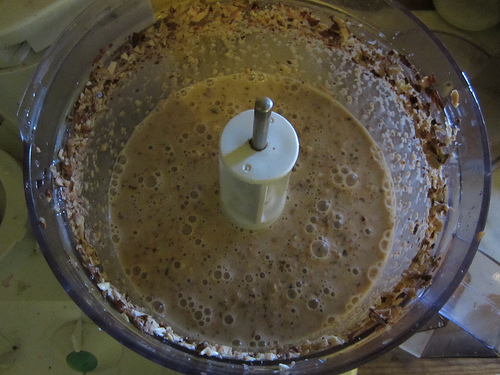
Step Three: Leach ‘em
We then put them in some jars under water and changed the water every few days or whenever we got around to it. Slowly the water turned from a very dark brown to a light tan see-through colour. It took about three weeks but would probably be a week or less if you changed it daily.
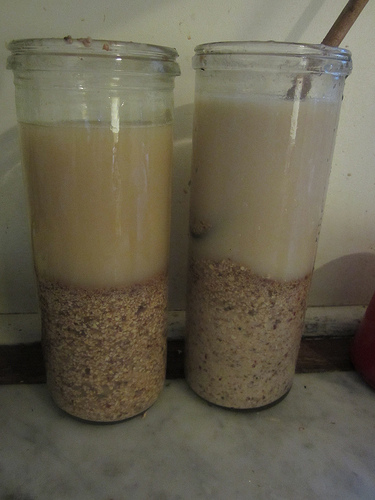
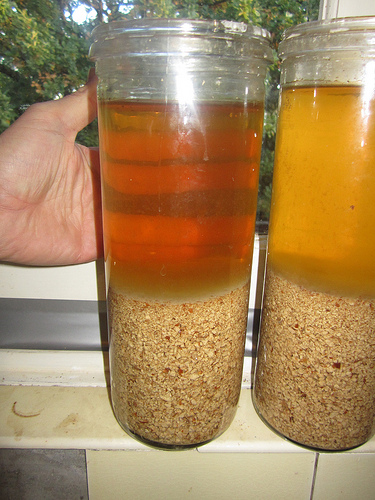
Step Four: Dry ‘em
We then spread them out on an oven tray and dried them out on a low heat overnight. Forgot to take a picture afterwards sorry but they turned to a dark brown colour during this stage.
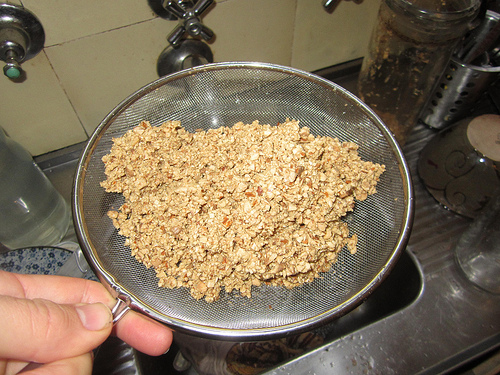
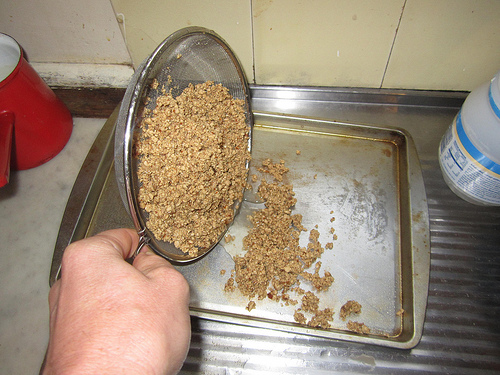
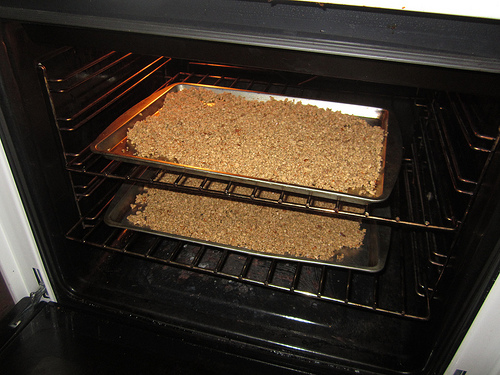
Step Five: Mill ‘em
We then chucked them into our grain mill to create acorn flour.
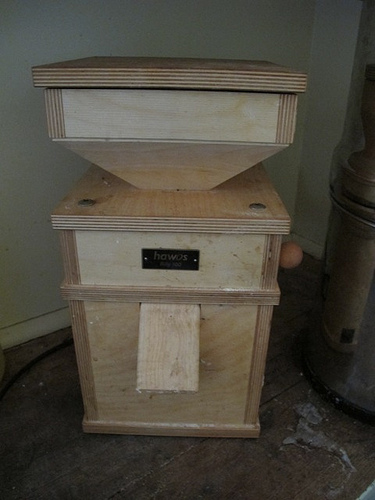
Step Six: Cook ’em
We then mixed them 50/50 with freshly milled wheat grain (we are gradually overcoming our addiction to annuals, not all at once) and used this blend to make a normal sourdough bread loaf.
Step Seven: Eat ’em
Out of the oven we shared our first loaf of acorn/wheat bread with our first ever permaculture design course participants. It was by all accounts a rich, earthy and most delicious flavour. The experience was heightened, of course, by the fact we were, tasting part of the future of the human food supply. How could it not be delicious?

Dan explaining the significance of what he was about to feed a VEG PDC group in May 2013
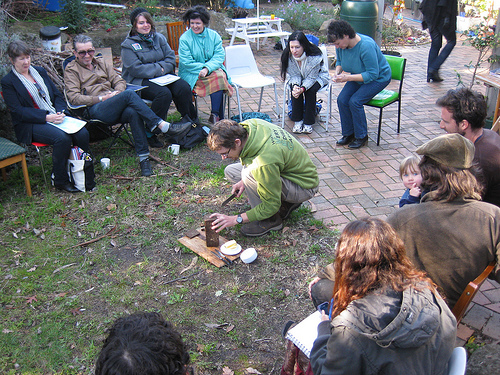
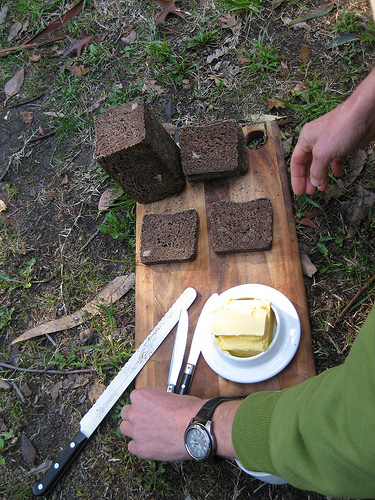
It sure looked good!
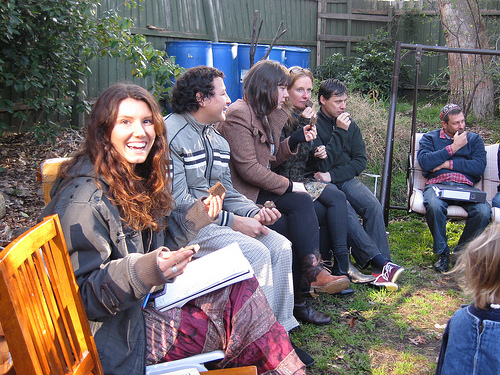
And very well received!
Finally, here’s a youtube of Dan enjoying a slice:

